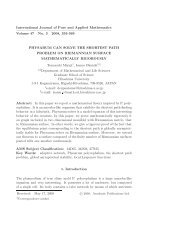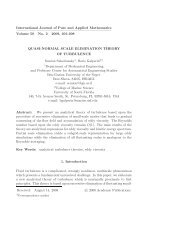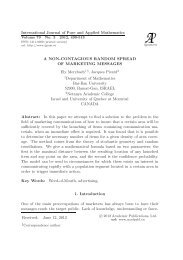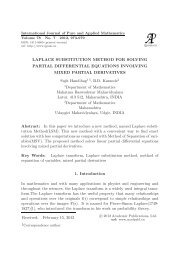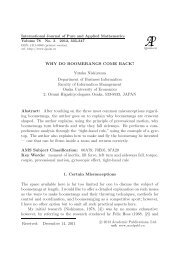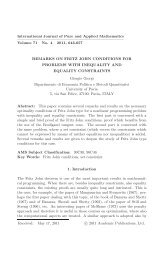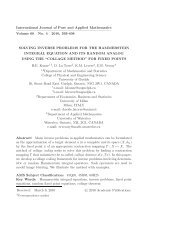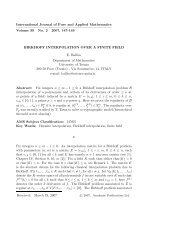CAVITATION, INDENTATION AND PENETRATION
CAVITATION, INDENTATION AND PENETRATION
CAVITATION, INDENTATION AND PENETRATION
You also want an ePaper? Increase the reach of your titles
YUMPU automatically turns print PDFs into web optimized ePapers that Google loves.
<strong>CAVITATION</strong>, <strong>INDENTATION</strong> <strong>AND</strong> <strong>PENETRATION</strong> 365<br />
P c<br />
0.14<br />
0.12<br />
0.1<br />
0.08<br />
0.06<br />
0.04<br />
Titanium<br />
Stainless steel<br />
Steel<br />
Aluminum<br />
0.02<br />
0 0.05 0.1 0.15 0.2 0.25 0.3<br />
m<br />
Figure 2: Variation of cavitation pressure Pc with expansion velocity m<br />
for four metals. The different markers represent the power expansion<br />
solution (16) with Σ∗ y instead of Σy.<br />
solution, valid for the practical range m 2 ≪ 1, and the dynamic cavitation<br />
pressure follows, to the third order, as<br />
Pc = P0 + P1m + P2m 2 + P3m 3 , (16)<br />
where coefficient P0 is the quasi-static cavitation pressure (1) normalized by E,<br />
P1 = 0 (no linear term) and<br />
<br />
2<br />
3<br />
P3 = − 2<br />
<br />
β<br />
9<br />
P2 = 3<br />
2 −<br />
2<br />
3 (7 + 5<br />
3 β)<br />
(1 + β) 5<br />
3<br />
βΣ 1<br />
3<br />
y , (17)<br />
5 (3 − β)<br />
. (18)<br />
(1 + β)<br />
Relation (16) applies also to strain hardening solids if Σy is replaced by an<br />
equivalent cavitation yield stress Σ ∗ y obtained by equating (6) with (1), where in<br />
the latter Σy is replaced with Σ ∗ y. Comparison between numerical solutions of<br />
(14)-(15) and the power expansion (16), for several metals, is shown in Figure<br />
2 revealing excellent agreement.



